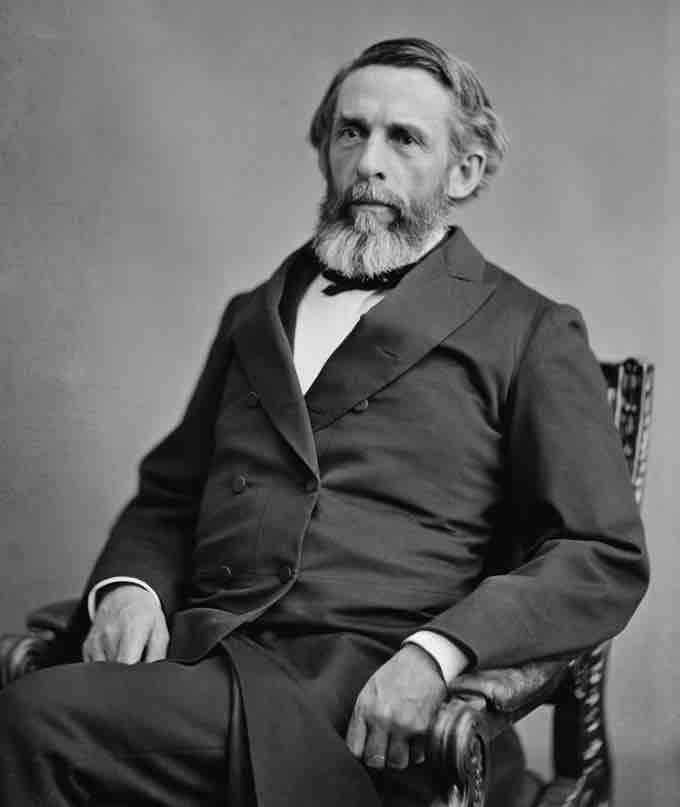Grant and the Government Debt
In the first two years of Ulysses S. Grant's presidency, Treasury Secretary George Boutwell helped reduce federal expenditures to $292 million in 1871, which was down from $322 million in 1869. The cost of collecting taxes fell to 3.11 percent in 1871. Grant reduced the number of employees working in the government from 6,052 on March 1, 1869, to 3,804 on December 1, 1871. He also increased tax revenues by $108 million from 1869 to 1872. During his first administration, the national debt fell from $2.5 billion to $2.2 billion. The United States had debt prior to the Civil War, but it increased sharply during the war. One reason for the increase of debt was the selling of bonds to citizens to pay for the war efforts.
Grant's first move upon taking office was signing the Public Credit Act of 1869, which the Republican Congress had just passed. It ensured that all public debts, particularly war bonds, would be paid only in gold rather than in greenbacks. The price of gold on the New York exchange fell to $130 per ounce—the lowest point since the suspension of specie payment in 1862. The measure is significant because it was a step to help alleviate the financial struggles faced by the United States after the Civil War. The United States was already indebted before the war, and the issuing of greenbacks to keep currency circulating during the war increased the indebtedness significantly. The country had no central bank or monetary policy at the time and was desperate to improve its position to maintain itself as a global economic leader. One effect of the bill was creating a shortage of much needed cash for farmers in the western states and territories.
On May 19, 1869, Grant protected the wages of those working for the U.S. government. In 1868, a law had been passed that reduced the government working day to eight hours. However, much of the law was later repealed in order to allow day wages to also be reduced. To protect workers, Grant signed an executive order that, "no reduction shall be made in the wages" regardless of the reduction in hours for the government day workers.
Boutwell and the Treasury
Following in line with the Republican Party national platform of 1868, Secretary Boutwell advocated that the national debt must be reduced and the United States return to a gold specie economy. Boutwell believed that the stabilization of the currency and the reduction of the national debt was more important than risking a depression by withdrawing greenbacks from the economy. On his own, with neither the knowledge of President Grant nor other Cabinet members, Boutwell controversially began to release gold from the Treasury and sell government bonds in order to reduce the supply of greenbacks in the economy. As secretary, he opposed a rapid lowering of taxes and favored using surplus revenues to make a large reduction of the national debt. In 1870, Congress, at his recommendation, passed an act providing for the funding of the national debt and authorizing the selling of certain bonds, but not authorizing an increase of the debt. Boutwell also reorganized and reformed the U.S. Treasury. First, he discharged unnecessary employees. Second, he started sweeping changes in the Bureau of Printing and Engraving to protect the currency from counterfeiters. Then, he improved bookkeeping with customs houses. Finally, he revitalized tax collections to hasten the collection of revenue. These changes soon led the Treasury to have a monthly surplus. By May 1869, Boutwell reduced the national debt by $12 million. By September, the national debt was reduced by $50 million.

George S. Boutwell
George S. Boutwell served as secretary of the Treasury under Ulysses S. Grant.